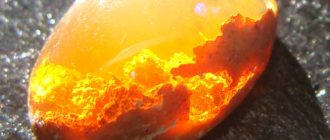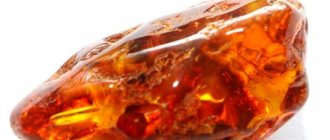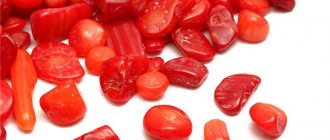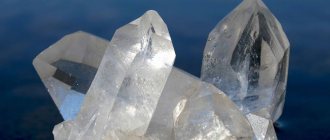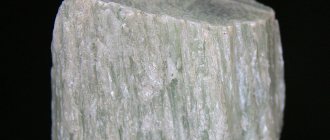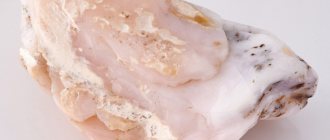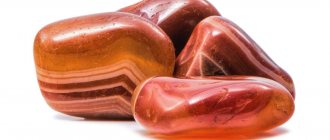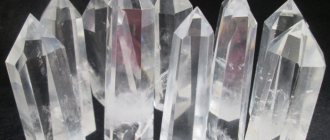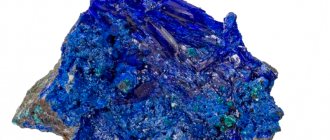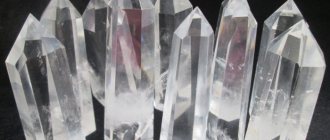This mineral is so diverse that it is simply impossible to confuse it with another gem. There are legends about him in many countries in different parts of the world. Opal can be both a gift and a curse. Not everyone is given the opportunity to find a patron in this gem - the stone will either open up new opportunities for the owner, or bring a person to the very bottom.
Origin story
On all continents of our planet there are ancient legends in which opal played an important role. These stories are fascinating and frightening at the same time.
An interesting legend is preserved by ancient Greek myths that tell of the victory of the god Zeus in the war with the Titans. It is believed that multi-colored opals are divine tears of happiness that fell from heaven to earth. The ancient Greeks were sure that the power of the Zeus stone could endow a person with the gift of clairvoyance.
The Arabs believe in the ability of the mineral to protect from the influence of the elements and bad weather, considering the gem to be a child of lightning. India talks about the goddess of the rainbow, who was pestered by numerous fans. Running away from them, the girl fell, breaking into hundreds of multi-colored stones.
The main purpose of opal for centuries has been to bring good luck. However, history has captured the moments when the nugget became a participant in fateful events. Scandinavians are sure that opal is the creation of the blacksmith god, the material of which was children's eyes. The chronicles of the Middle Ages speak of many dark rituals performed with the help of a gem. In addition, the nugget served as poison - the mineral, crushed into powder, poisoned food.
Do you know that in 1829, after the publication of Walter Scott’s novel “Anna von Geyerstein”, opals ceased to be in demand for the next 20 years. This is due to the plot of the novel, in which the gem causes the death of the owner. A year later, I.V. Kireevsky presented Russia with the story “Opal”, after the publication of which the mineral for a long time acquired a reputation as a stone that brings misfortune.
One of the English monarchs, Edward VII, feared the influence of opal, ordering all the gems to be removed from the crown. Josephine, Napoleon's wife, laughed at this kind of prejudice. However, one day a gem with the beautiful name “Burning Troy” appeared in the house of a married couple, which caused the couple to separate.
Later, a legend appeared that this pebble simply disappeared into thin air. Jewelers had to get rid of stones, since no one wanted to buy jewelry with opals. The interesting thing is that the stone does not have a single meaning.
Translated from three different languages, the name “opal” is interpreted completely differently. In Latin the word means “Enchanting Gaze”, in Greek it means “vision of change”, and in Sanskrit it describes the meaning of “precious stone”.
Australian peoples consider opals to be traces of the Creator of the World, calling the stones “desert fire.” Today, the mineral is the officially recognized symbol of South Australia, as well as the local women's national basketball team.
Interesting Facts
The first mineral deposit on the Australian continent was discovered in 1849 by accident. Industrial production began 40 years later. Since then the term "Australian opal fields" has been coined. The largest slab of rock is called the “Flame of the Andamooka Desert.” For a long time, stones were mined in difficult conditions. The desert climate is characterized by sharp temperature changes, so the miners were exhausted from the heat during the day and from the cold at night.
Stones were mined using a pick and a shovel in mines 5-40 m deep. The rock was lifted to the surface in buckets. This primitive mining method exists in some mines to this day. The minerals lie shallow, so owners do not want to spend money on purchasing expensive equipment. 97% of all gems in the world are mined in Australia. Opal even became a symbol of the southern part of the continent.
Once upon a time, Queen Victoria saved a rare mineral from persecution, returning its good name. Even in ancient times, opal was attributed with magical properties. But in the 19th century. people began to fear the stone. At that time, due to superstitions, many family jewelry and dishes inlaid with opals were thrown away.
At the same time, mineral deposits began to be actively explored on the Australian continent. To restore the stones to their former glory, Queen Victoria began to appear in public wearing opal jewelry. Following the monarch, ordinary women and ladies adopted fashion. Each of them wanted to have jewelry like the queen.
For a long time, there was no rational explanation for the magical flickering of stones. Scientists did not understand where the multi-colored reflections came from. Just 50 years ago, it was discovered that the fabulous palette appears due to silica spheres in the rock. This happened only after the invention of the electron microscope.
Place of Birth
Opal mining is carried out on all continents of the Earth. The deposits are thin layers; large pieces are rare. The main deposit is famous for the Australian mainland, where more than 95% of the world's reserves of the mineral are located.
About 90% of production comes from crystalline white opals. The main excavations are being carried out in the state of South Australia, in the town of Coober Pedy. A type of opal called "boulder" is found in Queensland, mainly at the Janda mine. Only 5% of the total Australian production falls on a rare mineral of different tones of black color. This nugget is mined in the town of Lightning Ridge, which is located in the state of New South Wales.
Did you know that the end of 2008 was marked by news from NASA that opal deposits had been discovered on the planet Mars.
Another large-scale supplier of the mineral is the African country of Ethiopia. Most precious and semi-precious opals are mined in the following countries:
- Australia.
- Mexico.
- Guatemala.
- USA (Nevada).
- Japan.
- Honduras.
- Slovakia.
In the listed mining areas, as well as in Turkey and Kazakhstan, fire and ordinary opals are more common. Minor finds have been found in the Kamchatka region of Russia, as well as in Ukraine.
Areas of application
Fine and some common opals are used by jewelers.
Diatomite is a rock that consists mainly of opal. It is used in the chemical industry.
Diatomite
Physical properties
Opal is an amorphous silica without a crystal lattice, which is capable of impregnating the remains of small animals and vegetation, thereby forming fossils. The mineral fills cracks in the host rocks, forms various sinter forms, and pseudomorphs after other minerals.
This nugget exhibits the effect of opalescence - the internal glow of the stone, scattering on the surface in different colors. White stones are characterized by a radiance of white, red, blue or green colors. Black ones shine with all the colors of the rainbow, and fiery ones have a greenish-brown tint.
The percentage of water in a mineral is responsible for the transparency of the stone. Noble nuggets are always transparent, the water component reaches 13%. Stones with a lower value are considered translucent. There are specimens consisting of 30% water. Opals owe their variety of colors to impurities of various kinds of oxides.
| Property | Description |
| Formula | SiO2 nH2O |
| Impurities | Fe2O3, MgO, CaO |
| Hardness | 5,5 — 6,5 |
| Density | 1.96 - 2.20 g/cm³ |
| Refractive index | 1,44 — 1,46 |
| Kink | Conchoidal. |
| Fragility | Fragile. |
| Cleavage | Absent. |
| Birefringence, dispersion, pleochroism | None. |
| singonia | Amorphous. |
| Shine | Glassy, greasy, waxy, pearlescent, dull. |
| Transparency | From transparent to translucent. |
| Color | White, yellow, red, orange, brown, blue, green, black. |
The mineral is characterized by a glassy luster. Noble samples are famous for their pearlescent luster. The hardness of opal is average, the stone is quite fragile. Another feature is the complete dissolution of the mineral in an alkaline environment.
Also read: Marble is a stone of harmony and warmth in relationships
Combinations of blue opal and other minerals
The element of mineral is Water. Therefore, opals go well with Earth stones:
- agate;
- turquoise;
- aquamarine;
- malachite;
- nephritis;
- moonstone;
- topaz;
- zircon;
- pearls;
- tourmaline.
Blue opal goes well with pearls.
Medicinal properties
During the Middle Ages, when plague epidemics covered Europe, people used opal rings as a protective amulet. Modern lithotherapists describe the healing properties of the stone in the following directions:
- Psychological health. Peruvian blue spherical opal is an ideal choice for meditation or relaxation. This mineral will free a person from the pressure of unnecessary emotions, restore healthy sleep, and relieve anxiety. Any noble nugget will drive away fainting, a feeling of melancholy, and calm the nerves.
- Heart function and other vital functions. Pink opal is suitable for this, it will regulate cardiac activity and improve the functioning of all body functions.
- Vision. Lithotherapists recommend a daily massage of the area between the eyebrows with green opal to improve vision.
- Digestive system. Noble opal can cope with problems of the gastrointestinal tract.
Fire opal will help sluggish, physically weakened people. This stone will fill a person with the necessary vital energy. This type of mineral is also used to treat diseases of the circulatory system, and during periods of depression, fire opal will have a calming effect on a person.
Where is it used?
The only area where the noble opal stone is used is jewelry. Decorative small things are made from simpler stones. The gem is suitable for women of any age and color type. A bracelet or ring with a dark stone is a men's accessory. Since cutting does not enhance opalescence, the opal is treated as a cabochon.
Gold ring with opal
The price depends on the type - $70–210 per carat. The most affordable price is for stones in light shades (milky white, blue). More often, earrings, a pendant or a brooch are decorated with gemstones. A ring or bracelet requires caution when worn.
Magic properties
From an esoteric point of view, opal is an energetically strong mineral. It is most suitable for people living in a frantic rhythm, striving to reach heights and gain wealth. This is a stone of talent and charisma.
In the hands of a person who lives slowly and measuredly, the gem will turn into a weapon of delayed action - opal will not get along with such an owner, suppressing with its energy, bringing misfortune to the person.
For weak-willed natures, the mineral will become a source of fears and manias; the person will become suspicious and prone to conflicts. But people of creative professions form an ideal tandem with opal - the stone inspires, directs creative endeavors in the right direction, creating a protective barrier around the owner from the influence of others. The magical capabilities of the mineral directly depend on the color variety.
Black opal
This rare variety of mineral is an ideal amulet for people with a strong character and passionate nature. The owner of such a stone will be distinguished by mental acuity and the ability to think analytically.
However, it is worth remembering that such a mineral in combination with gold awakens negative qualities in a person, so black opal is not recommended for people prone to adventurism and gambling. This type of gem is used by sorcerers to perform magical rituals.
White opal
The complete opposite of black mineral. This stone is a symbol of virtue, supporting in the owner such character traits as compassion and patience. The white gem becomes a talisman for healers, philanthropists, and people working in the social sphere.
Blue opal
Minerals of blue and dark blue shades are symbols of good luck. Such an amulet is most suitable for purposeful individuals, as it helps to direct all their energy towards achieving their goals. Dark purple opal awakens the gift of clairvoyance in the owner, and also helps a person become sociable.
Fire opal
The magical abilities of this mineral are different. They depend on who the talisman belongs to - the owner or the owner. For the strong half of humanity, fire opal is a source of male confidence. And representatives of the fair sex will gain femininity, charm, and wisdom.
Pink opal
People who are not prone to fuss and adventure will find the necessary peace, harmony, and security with such a talisman. The pink mineral will create a barrier from diseases and troubles around the owner, help overcome stress, and restore restful sleep, driving away bad dreams. And this gem also acts as an assistant in love affairs.
If a person is prone to melancholy, suicidal feelings, or simply lives in a non-existent world of his fantasies, then the best gift for him would be an opal keychain or pendant set in silver.
It is believed that opal amulets of any shape, be it a figurine or an ordinary processed nugget, protect the house from the influence of natural elements, robbery, and preserve home comfort.
Clarity
To correctly determine the clarity of an opal, you need to stand with your back to the sun and, with your arm bent at the elbow, examine the opal in reflected light. The important thing here is to keep your eyes between the light source and the stone. If sunlight is not available, you can use a 40W incandescent lamp, viewing the opal at a distance of 30-40cm against a neutral background.
It should also be noted that opals are valued in direct sunlight. Due to the fact that the color in them does not arise due to pigments, but due to diffraction, full-spectrum light is required, that is, white. The better the quality of the opal, the better it will look in the worst lighting and indirect light. Unfortunately, an $80 opal will not show the same richness of color indoors as an $800 opal and in some situations will appear just gray, and of course an $8,000 opal will look completely different. There are exceptions, but generally every dollar improves the quality of your purchase.
Jewelry with stone
Opals are used in only one area - the jewelry industry. To enhance the play of colors, stones are given an oval or spherical shape when processed. Minerals of dark shades are more often used to make men's jewelry - rings, bracelets, cufflinks.
Did you know that in 1956, in the state of South Australia, near the city of Coober Pedy, the world's largest opal was found, the value of which today is estimated at 2.5 million Australian dollars.
The main jewelry that is decorated with opal are brooches, pendants, and earrings, since they are least exposed to mechanical stress. Rings with bracelets are less often inlaid with this stone, because they require special care when using.
The cost of jewelry is varied, as is the choice of colors of inserted stone, metal, and product design:
- Earrings. Prices for gold products start at 25,000 rubles. Silver jewelry costs 2–3 times less.
- Rings. From 16,000 rubles for gold jewelry.
- Brooches. 20,000-30,000 rubles for gold products.
- Pendants. From 8000 rubles. Silver – from 2000.
The price of the product depends on the type of stone used to decorate it. Light-colored opals are considered the most affordable.
Read more in another article about jewelry with opal: Read article
Also read: Sultanite – an ancient Eastern chameleon among precious stones
Short description
According to its physical properties, opal is a solid hydrogel of silicon oxide. It is close in quality to quartz, but differs from the latter in its variable moisture content. The amount of water in the rock ranges from 0.4 to 32%. The properties of stones, as well as their jewelry value, largely depend on the concentration of the liquid. Noble opal should contain from 6 to 10% water. Such specimens are especially prized by jewelers. The more moisture a mineral contains, the more transparent it is. A stone that dries completely becomes completely opaque. At the same time, it loses its properties, may crack and even crumble.
Gold earrings with cubic zirconia, opals and citrines (go to the SUNLIGHT catalogue)
The name of the minerals is translated from the Saxon language as “gems”. Indeed, for their stunning beauty they have gained enormous popularity in jewelry. Opals are often used to make earrings, brooches, bracelets, and pendants. Framed by precious metal, the mineral looks simply magnificent.
Color varieties
Opal is one of the stones that boasts a huge variety of color variations. Minerals are divided into varieties based on the presence of opalescence effect, hue saturation and transparency.
Perfectly transparent minerals with rich colors are considered noble gemstones. Other varieties are classified as semi-precious gems. Colorless stones or minerals of faded shades play the role of ornamental stones - they are used to make small decorative items.
Noble precious opals
Endowed with a beautiful rich color, such stones are usually transparent, occasionally having a slight cloudiness. These include:
- Lechos opal is a beautiful green stone interspersed with emerald color.
- Peruvian blue. This variety includes transparent specimens, the opalescence of which varies from blue to ultramarine.
- Cat's eye - minerals of yellow shades with a characteristic white stripe in the center. Endowed with an opalescent effect.
- Fiery. The stones are a rich fiery orange or red color. The specimens mined by the Brazilians are translucent due to the low percentage of water content. Australian minerals have a different structure; they have a fiery orange color with a red tint. Minerals with opalescence are found only in Mexico.
- Black. The most expensive gem among the precious varieties of stone. The mineral has a dark green, deep brown or inky base.
- Royal (royal). The stone is endowed with a bright red saturated color, and the edges of the mineral are green.
- Harlequin. An ideally transparent variety of gem. The name of the nugget corresponds to the color - the stone is saturated with splashes of yellow, red, and blue colors, which creates a kind of figured mosaic. This structure is complemented by fiery highlights.
- Matrix. The mineral is black in color with shimmering colored inclusions.
- Girasol (translated from Italian as “solstice”). Colorless, completely transparent opal with blue highlights.
Any of these minerals is rightly called noble. Each of them is unique, unrepeatable, unforgettable.
Simple semi-precious opals
This variety includes all finds with a lesser degree of transparency and paler colors. Nature hides many such specimens:
- Opal-onyx. Yellow opaque mineral with rust-colored stripes.
- Cacholong. A white stone that looks like porcelain.
- Opal-agate. A striped variety of gemstone, similar to agate.
- Water opal (hydrophane). Translucent, cloudy, porous specimen. A special feature is complete transparency when immersed in water.
- Chrysopal. The stone is apple green, opaque.
- Hyalite. Transparent, like glass.
- Opal Jasper. It consists of iron dioxide, which gives the stone different shades of red.
- Pearl. Reminds me of white pearls. The stone is slightly transparent, has a pearlescent sheen and, very often, inclusions of different colors.
- Dendrite. Opaque mineral of milky or creamy beige color. It is interesting for the presence of patterns in the form of leaves, branches or moss.
- Rainbow or Ethiopian. A mineral distinguished by its variety of colors and 3D effect.
- Koroit. It is an iron ore with veins of opal.
- Boulder. Opal with veins of red iron ore.
- Green. Can be confused with apple green jade. Occasionally, the surface of the mineral is decorated with shiny inclusions.
- Wax. The mineral is amber or yellowish in color with tints of the same shade.
- Dark. Samples of dark colors, but not saturated enough to be classified as noble stones.
- Pink. A transparent or translucent mineral with a blue glow, making it similar to Moonstone.
- Lactic. It has a rich color, but lacks transparency.
- Honey. Transparent yellow nugget.
Many of these varieties can be confused in appearance with other minerals. However, opal is characterized by its own physical and chemical composition, distinguishable from other stones.
How to distinguish a fake?
Instead of natural opal, cheap glass imitations are often offered. Serial products are decorated with opal doublets. To do this, opal plates are glued onto glass, obsidian or onyx. Externally, it is difficult to distinguish such a stone from a natural one.
If they try to slip you a piece of glass, the natural properties of real opal will help you avoid falling for the bait:
- Opalescence. The shimmer of natural stone is floating, soft, multi-colored, which cannot be said about the glass replacement with sharp reflections of the same color.
- In sunlight, the natural mineral will show all the colors of the rainbow on the hand, but the substitute will not.
- Air bubbles are sometimes visible inside the fake.
- Try to put the stone against your tongue - the fake will definitely stick to it.
- You can put the stone in colored or simply contaminated water - natural opal will change color.
- Natural minerals do not have a repeating pattern; they are characterized by color zoning.
There is also the possibility of purchasing jewelry with artificial opal. Russia, China, and Japan are leaders in growing minerals in laboratory conditions. In fact, artificial opal is created from substances that are found in natural gems. Growing conditions are also close to natural, only the “ripening” period of the stone is about one and a half years.
A synthetic analogue of stone is endowed with such advantages as increased strength, a variety of shades that often do not exist in nature, low cost, and visual appeal. However, it is worth considering that artificial stone is just a decoration. There can be no talk of any magical or healing properties.
Artificial opals
Synthetic stone is produced in laboratories. The Australians were first, followed by the Swiss. They offered colors not found in natural opals.
Artificial opals
Now opals from substances present in the original stones are stamped in Russia, Japan and China. The technology is a trade secret. It is only known that natural conditions are copied, but cultivation lasts not millions of years, but a year and a half.
The advantages of synthetic opal: hardness, resistance to heat, variety of colors, low cost and aesthetics.
How to wear it correctly?
Opal is a special stone that requires special attention. When a gem is purchased for the purpose of receiving magical or healing help, all aspects of use must be taken into account, starting from the moment of purchase. Here the phases of the Moon will come to the rescue, and minerals of different colors have their own rules:
- It is recommended to purchase white opal on the 4th day of the lunar cycle, and start using it only on the 18th lunar day.
- It is advisable to buy the milky mineral on the 14th lunar day, starting to use it on the 28th lunar day.
- The fire gem is purchased on the 25th day of the cycle, and can be worn from the 11th day of the next lunar cycle.
- It is better to buy all other varieties of the mineral on the 15th lunar day, and use it in the last days of the cycle (29-30 days).
Also read: Zoisite – displaying the colors of wild Africa
Once the purchase is made, all that remains is to follow some recommendations that will help you get the most out of the stone:
- A mandatory aspect is the contact of the gem with human skin, otherwise healing or magical powers will not manifest themselves.
- It is better to wear jewelry with a stone as often as possible, since the mineral needs moisture to exist, which it takes from the air or from the owner’s body. Otherwise, the stone is in danger of drying out. However, time away from each other is also necessary.
- Under a stream of cold water, the opal is cleansed of foreign energy.
- Jewelry with the mineral is worn after applying makeup.
It is recommended to wear the ring on the middle finger, without changing it from one hand to the other.
Favorable time to purchase
Opal is recommended to be purchased during the waning moon. It is worth going to the store in the evening so that the mineral falls under the light of a celestial body. The protective properties of jewelry in a silver frame are enhanced. Gold doubles magical power. To use the product as a talisman, buy an opal framed in silver.
Blue opal should be purchased in the evening.
Product care rules
Opal is a fragile stone. You need to wear the mineral carefully and take care of it in the same way. A few simple rules will help preserve your decoration:
- To wash the stone, you will need a soft brush moistened with a light soap solution.
- After washing, you need to leave the mineral for a couple of hours, wrapped in a damp cloth.
- The stone needs to be dried in the sun, but not for long.
- Strong heat or scorching sun will make the mineral dull. There is a risk of cracks due to overheating. The gem can be rehabilitated by immersion in water.
- Contact of jewelry with any detergents is contraindicated. Alkaline exposure can completely dissolve the mineral.
It is better to store opal products in separate containers with soft walls and bottoms, first wrapped in a soft cloth. Any careless attitude will harm such an extraordinary gem.
Variegated mix
There are pseudomorphs of opal based on organic remains.
For example, in one of the Australian mines they found an opalized reptile (a snake is not a snake, but it is very similar). The petrified animal sparkled with an amazing play of colors. The curiosity was immediately purchased by a collector.
Pseudomorphosis of noble opal based on a plesiosaur tooth
Has the stone lost its shine? Try wrapping your jewelry in a damp cloth for a few hours. This method is used only for solid stones. Doublets and triplets may simply separate after the procedure.
Due to the low hardness and high fragility of the stone, serious craftsmen make earrings, brooches, and pendants with opal. But not the rings!
Expert opinion
Semenishcheva Polina
Specialist in mineralogy. Graduated from St. Petersburg Mining University.
Not proven : they say that the stone cannot be given as a gift, you should buy it yourself. Otherwise, the new owner of the gem will develop hatred towards the donor. We haven't checked...
Famous opals
- There is a well-known story about the disgrace of the ancient Roman senator Nonius. A large stone, the size of a walnut. Nonius valued the gem so much that he stopped his honorable service and went into exile. Only in order not to part with the opal, which the almighty Mark Antony had his eye on.
- The notebook of the Elector of Saxony, Augustus the Strong, is kept in Dresden. The book has a tortoiseshell binding, which is decorated with an opal in the shape of a heart.
- Precious stones are rarely given their own names. To achieve this, the stone must be of outstanding beauty and excellent quality.
- Napoleon's wife Josephine had such a stone. Opal with the name "Trojan Horse".
Compatibility with names and zodiac signs
Opal is considered a universal stone, suitable for any zodiac sign. However, even this gem has its “favorites” in the world of names and Zodiacs.
Zodiac signs
Each type of opal sympathizes with a specific zodiac sign. Thus, rare black minerals will make a good pair only with Scorpios, Aquarius or Cancers. It is better for other signs not to try to make friends with such a gem.
(“+++” – the stone fits perfectly, “+” – can be worn, “-” – is strictly contraindicated):
| Zodiac sign | Compatibility |
| Aries | — |
| Taurus | + |
| Twins | + |
| Cancer | + |
| a lion | — |
| Virgo | + |
| Scales | + |
| Scorpion | +++ |
| Sagittarius | + |
| Capricorn | + |
| Aquarius | + |
| Fish | +++ |
White and blue opals are perfect for all signs of the fire element. Sagittarius will be able to darken character flaws, enhancing the courage, determination, and determination inherent in these signs. They like samples of blue tones.
Libra, Aquarius, Gemini are intelligent people by nature. Fire opals will add a certain wildness to your character, in the good sense of the word. But white minerals will give representatives of these signs excessive calm. Dark blue stones will certainly make friends with Aquarius.
Blue opals are also suitable for Taurus, and fire opals are suitable for Virgo or Capricorn. It is better for Cancers to prefer white minerals.
It is worth remembering the friendliness of opal with a certain type of character. Even perfect compatibility of the mineral with the name and sign of the Zodiac can repel the opal from the owner if the person is not endowed with certain personal qualities. This is an important aspect of choosing a mascot.
Names
The variety of names to which opal fits is as great as the number of varieties of the stone. Many men and women with simple or unusual names can count on the protection of this mineral:
- Ruslan. Opal will increase this man’s ability to work, help him achieve his goals, and successfully complete the work he has begun. The gem will also bring harmony to the relationship with your loved one, helping to pay more attention to your other half.
- Anastasia. Girls with this name are often susceptible to respiratory diseases. Opal will become a protective talisman for the owner, supporting health, as well as an assistant in achieving goals.
- Anton. The gem will provide him with success in love affairs and encourage him to achieve high goals.
- Elena. For such a girl, opal will become the keeper of the hearth, love, and mutual understanding. For mature women, the mineral is useful for maintaining vitality, as a protective barrier against disease.
- Vitaly. The talisman will help him establish communication with others, eliminating stubbornness, increased self-confidence, and a tendency to contradictions. Opal will protect such a man from nervousness and help him find a path to self-improvement.
- Irina. For her, opal will act as a lifeline, pacifying her natural temper, emotionality, and empty anxiety. With such a talisman, a woman will learn to appreciate what she has, develop creative abilities, and go through life with optimism. Opal will help businesswoman Irina develop diplomatic qualities, acquire useful contacts, and achieve career heights.
For each of the names, opal has prepared a number of magical properties that a worthy owner will certainly feel.
Is this stone right for you?
